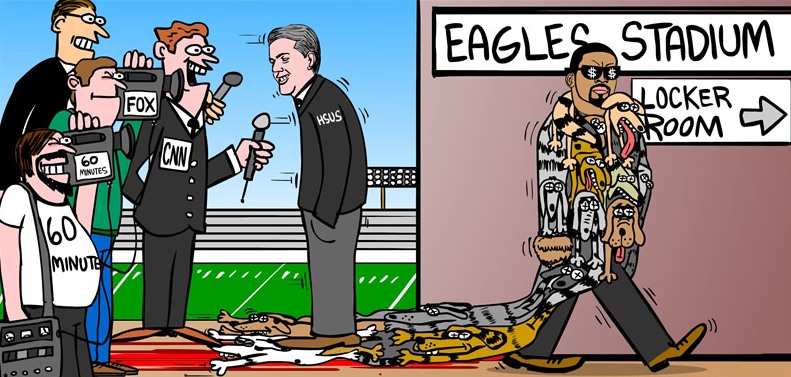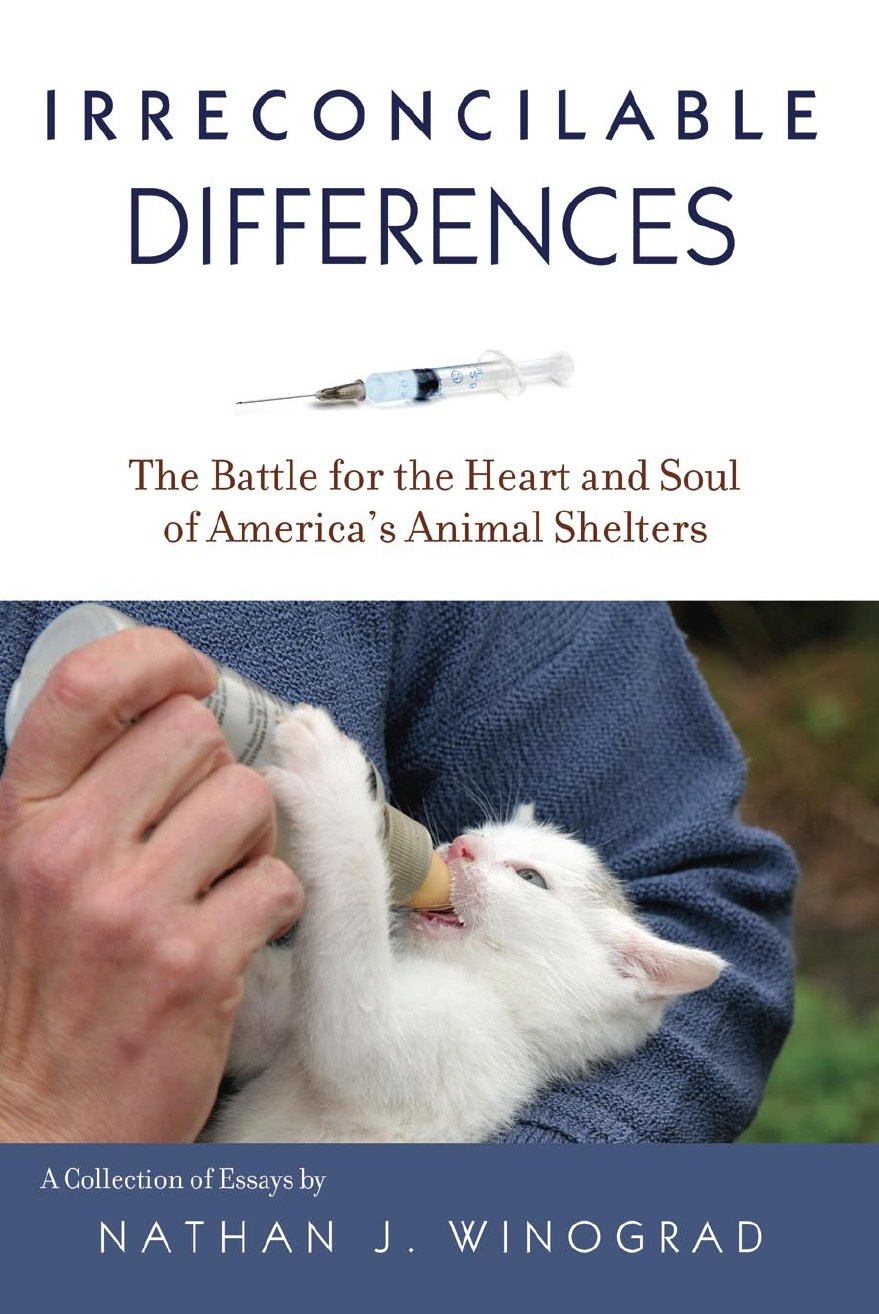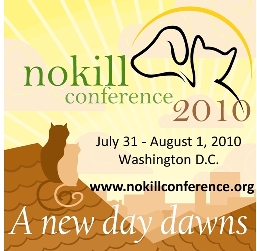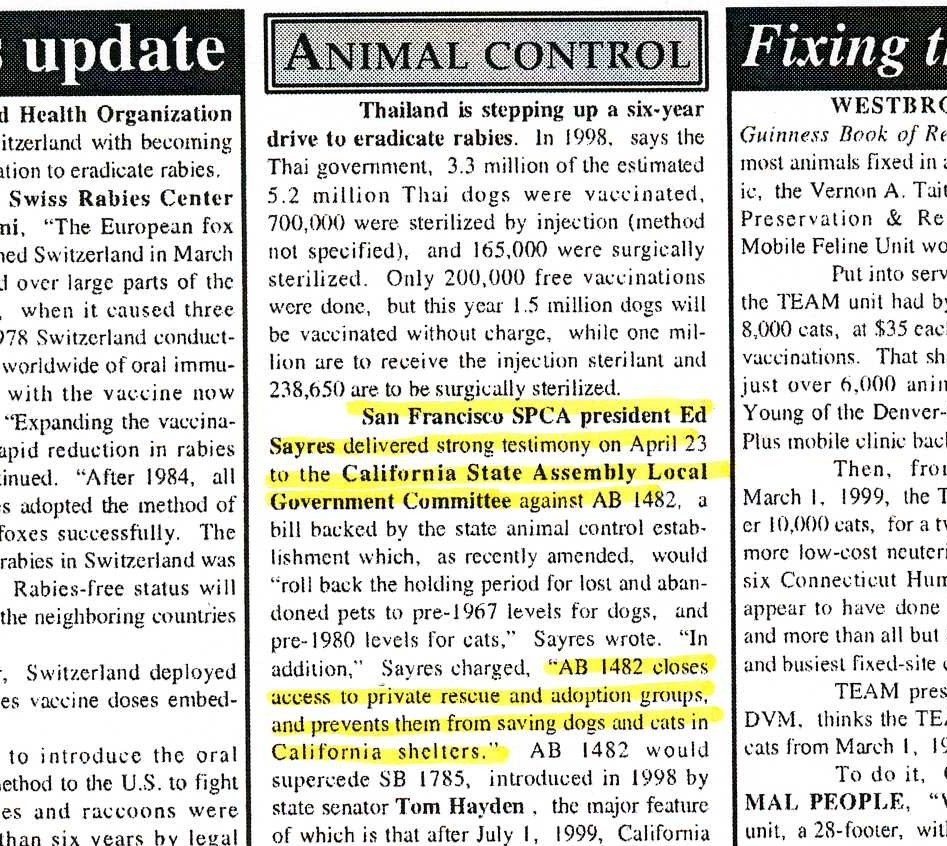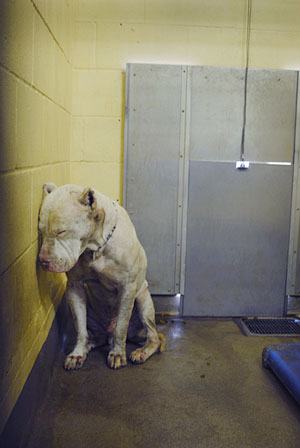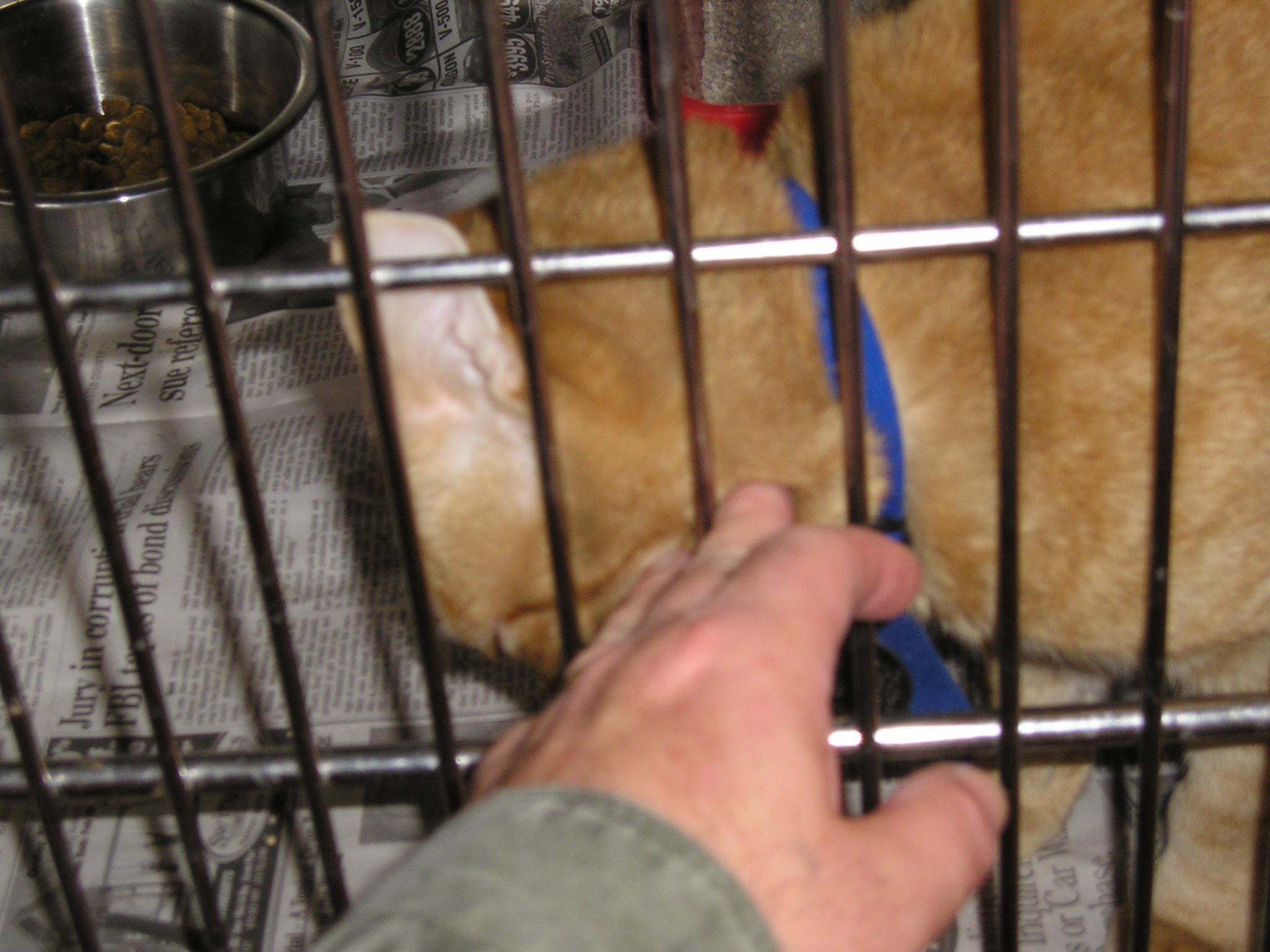HSUS Spokesman Michael Vick a Role Model? Tragically, Yes.
When Humane Society of the United States CEO Wayne Pacelle embraced Michael Vick, the most notorious dog abuser of our time, he said he hoped Vick would become a role model. Tragically, he was right. A teen arrested on dog fighting charges in North Carolina stated that he hoped to become “the next Michael Vick.” The animal protection movement has no business getting in bed with monsters.
While Pacelle, through HSUS, testified that the dogs Vick abused should not be given a second chance and should all be killed, Pacelle said that their abuser should be. Vick became a spokesman for HSUS. Or was it the other way around? In the process, Pacelle rides Vick’s blood-stained coattails to his favorite destination—the front pages of the New York Times, 60 minutes, and other media.
Read more by clicking here.
Did the ASPCA Cover up Abuse?
According to a recently filed lawsuit in federal court, the ASPCA abusively killed a man’s dog and then covered it up. That is tragic enough. The fact that the hospital where the abuse and killing occurred is called “Bergh Memorial” after the great Henry Bergh makes it all the more obscene. Ed Sayres is not fit to run an animal protection organization.
Read more by clicking here.
West Hollywood Votes to Ban Sale of Animals from Pet Stores
After an expose showed that a West Hollywood pet store was getting their dogs from puppy mills and then lying to the public about the source, the City of West Hollywood, CA voted to ban their sale. There is an exception for animals from rescue groups and shelters, which will hopefully lead to greater cooperation between public and private, the kinds of relationships that have saved countless animals in other communities, the model employed by pet supply stores such as PetSmart, and the basis of pet store owners Paula and Lewis Turner’s “modest proposal” to turn all pet stores into rescue havens: www.amodestproposal.org.
Irreconcilable Differences Book Tour
Next month, I will begin a nationwide tour to promote my recently released book, Irreconcilable Differences: The Battle for the Heart & Soul of America’s Animal Shelters. Unfortunately, because of project commitments, I will not be able to do the 30 cities I did for Redemption and I am trying to concentrate on cities I was not able to visit on that tour. Already, nearly 200 people have registered for the first City on the tour!
Join me for an inspirational multi-media presentation on Building a No Kill Community, followed by a book signing:
-¢ Shelby County, KY. March 6, 2010.
-¢ Melbourne, FL. April 3, 2010.
-¢ Greater Atlanta Area (Carroll County), GA. April 16, 2010.
-¢ NYC/NJ Area. April 20, 2010.
-¢ New Zealand. April 30-May 2, 2010.
-¢ Greater Seattle Area (Whidbey Island), WA. June 18, 2010.
-¢ Washington D.C. (No Kill Conference). July 31-August 1, 2010.
I will be adding a few more cities in the next several weeks. Learn more by clicking here.
A Tour of U.S. Shelters
An article in the Salt Lake Tribune describes yet more abuse at the hands of shelter workers which are supposed to be the animals’ protectors. This time, the director is accused of breaking the necks of kittens. Combined with other scandals in other shelters, such as starving animals to death in Memphis, the conclusion is clear: America’s animal shelter system is broken.
Take a tour of U.S. shelters by clicking here.
No Kill Conference
Last year’s No Kill Conference was the sold out, must attend event of the year. And it is happening again! The only national conference that says we can and must stop the killing and we can and must do it today.
New speakers and workshops have been added including Michael Mountain, founder of Best Friends Animal Society, on fundraising; Richard Avanzino of Maddie’s Fund on using the law to save animals; Ginny Mikita on defending dogs; and more.
Join No Kill advocates nationwide at this ground-breaking event. A No Kill nation is within our reach!
What: No Kill Conference 2010
When: July 31-August 1, 2010
Where: Washington DC
Since being announced less than a month ago, the No Kill Conference is now at about 80% of capacity. If you are considering attending, do not delay. Once sold out, there are no waiting lists and no exceptions.
Learn more or register by clicking here.
Opposing Oreo’s Law: Why the ASPCA is Willing to Condemn Animals to Death
An amended version of Oreo’s Law is due this week which incorporates additional protections against hoarding and dog fighting, excludes dangerous dogs, and gives rescue groups a specific period of time to take custody of an animal.
Named after Oreo, a dog the ASPCA killed despite a rescue group’s offer to save her, the bill would make it illegal for any New York State shelter or pound to kill an animal if a legitimate rescue group is willing to save the animal’s life. But Ed Sayres, the President of the ASPCA, wants to kill the proposed law, the way he killed Oreo, for which the new law is named.
Though the ASPCA couches its opposition by claiming the animals are better off dead because they might go to hoarders, the argument is not sincere due to the many protections already in the proposed legislation. In addition, Ed Sayres defended similar legislation in California when he was President of the San Francisco SPCA, against such facile arguments.
In reality, the ASPCA’s President does not want people remembering the killing of Oreo. In fact, the notion that a New York State legislator in the ASPCA’s own district would have to pass a law to protect animals from an animal protection organization is a scandal that threatens to define Ed Sayres’ tenure at the ASPCA. He has threatened to kill the bill as a result. This is unethical, an abuse of his power, and a betrayal to the animals he is paid half a million dollars a year to defend.
While the animal loving people of New York State flood the legislature with calls of support, while the most progressive voices in the companion animal movement have embraced and endorsed Oreo’s Law, and while rescuers anxiously await legislation that will empower them to save the lives of thousands of animals every year, the leader of the nation’s wealthiest SPCA stands alone in defiant opposition, thumbing his nose at them all.
Because of revelations that he supported similar legislation in the past while in California and because of new amendments excluding groups who are being investigated or have been convicted of neglect, cruelty and dog fighting related crimes, Sayres is fear mongering that the law will lead to dangerous dogs being released into communities. Once again, this is nothing more than a diversionary tactic. And once again, history proves him wrong.
Oreo’s Law is based on nearly identical California legislation which has been in effect for over a decade. Despite similar dire predictions in California, there is no evidence this has occurred. The reasons for this are many:
1. Like Oreo’s Law, the California law on which it is based, did not amend the state’s dangerous dog laws. In fact, Oreo’s Law excludes dogs deemed “dangerous” under New York State law.
2. It is not appropriate to needlessly kill dogs due to fear that only the most docile of dogs will be safe in adoptive homes. Most institutional shelter employees are less able than rescuers to assess dogs because of differences in their training and the settings in which they test dogs’ temperaments. And rescuers who provide foster care for animals can more easily and accurately assess animals’ behavior than can most institutional shelter employees. Animals in foster care have a longer time to adjust, and they can receive attention that they do not normally receive in shelter environments. In contrast to foster homes, shelters are very loud, crowded, and stressful environments. Combined with pressure to make quick decisions, animals are not given time to settle/calm down in the new environment which would allow more accurate evaluation. As a result, it is not uncommon for animals to be deemed “aggressive” or having behavior issues in a shelter environment, only to be found to be loving, friendly animals out of the shelter.
In a shelter
In a foster home
3. Rescue groups often have among their members (or ready access to) behavior specialists who can provide better evaluation and rehabilitation options for dogs than can most shelters. In the case of animals with true behavioral problems that make them less suitable for most adoption opportunities, rescue groups work collaboratively to seek the best possible circumstances for each animal.
4. There is no evidence that rescue groups take undue risks by adopting out dogs that pose a safety risk. Rescue groups have the same disincentives to adopting out truly aggressive dogs as shelters do and are well aware that doing so would risk continuity to their ability to rescue and find homes for animals. They are careful to preserve their right of access and their goodwill with the public.
5. On the other hand, there is evidence that shelters over-kill animals, denying them adoptive homes and denying their would-be adopters the ability to adopt them. Many shelters claim dogs are “aggressive” without using a specific test that has been shown to have predictive validity. In fact, some shelters as a rule label all dogs who they say look like specific breeds to be “aggressive,” regardless of their true temperament. Other shelters bang on the sides of cages and “fail” every dog who cowers. In other cases, shelters will simply claim dogs are aggressive when they are just shy or scared by the shelter environment. And still others claim dogs are aggressive, even when they are not in order to avoid public scrutiny and condemnation for the killing. The puppy below was only a few weeks old and could not even eat on his own. Yet the agency argued that he was “vicious” and should be killed. The puppy was put to death even though rescue groups offered to save him.
6. In California, the original version of the legislation did have an exemption for dogs a shelter claimed were “aggressive.” This was written in because the legislative sponsor did not believe he could pass the law without it, even though it was understood this would eviscerate the intent of the law by giving shelters an almost unlimited discretion to continue killing dogs despite a lifesaving and cost saving alternative. It was the shelters and municipalities that oversaw those shelters which asked legislative proponents to remove the provision because it opened a shelter up to liability. By specifically excluding dogs they deem “aggressive,” shelters and municipalities did not want the corollary to be assumed: that the dogs they did give to rescue groups were certified to be safe.
7. There is no established temperament evaluation for cats (this is also true of hamsters, rabbits, and other animals covered by Oreo’s Law.) Cats have been labeled “severe” and “aggressive” in shelter environments only to commonly calm down and blossom in a foster care environment. Since a behavior evaluation of cats is largely pointless, reputable shelters do not evaluate cats for aggression. Moreover, cats deemed “unsocialized” or “feral” are routinely placed with cat rescue and feral cat groups by these shelters, since these cats do not attack, but hide. As such, they do not pose a public safety risk. The cat shown below, cuddling up to someone, was deemed “aggressive” by a shelter and sentenced to death.
Also: Click here to watch a short video of a cat deemed “severe” (high levels of agression) and “feral” at New York City’s Animal Care & Control.
8. The law will primarily save kittens and puppies, and healthy and friendly animals who make up the vast majority of animals entering—and being killed—by shelters. That is because rescuers will be able to place holds on animals who will then not be killed because “no one wanted them” in the short period of time that is available under the holding laws and policies. To oppose a law with such vast lifesaving potential for all animals entering a shelter based on dire predictions about aggressive dogs which have not materialized despite 11 years of experience in California is unethical and indefensible.
To learn more about Oreo’s Law, including who supports it and how you can help, visit the all-new: www.YESonOreosLaw.com
More Shelter, No Kill, and Animal Related News
Don’t forget to read kcdogblog‘s “Weekly Roundup,” yesbiscuit‘s “Treats on the Internet,” and petconnection‘s weekly updates.
